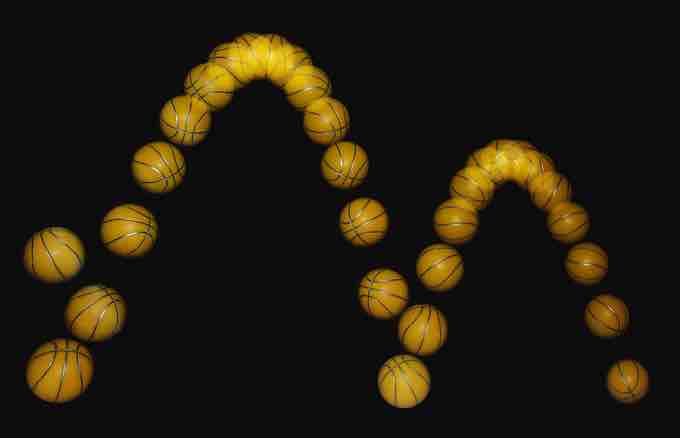A motion diagram is a pictorial description of the motion of an object. It displays the object's location at various equally spaced times on the same diagram; shows an object's initial position and velocity; and presents several spots in the center of the diagram. These spots reveal whether or not the object has accelerated or decelerated. For simplicity, the object is represented by a simple shape, such as a filled circle, which contains information about an object's position at particular time instances. For this reason, a motion diagram is more information than a path diagram. It may also display the forces acting on the object at each time instance.
is a motion diagram of a simple trajectory. Imagine the object as a hockey puck sliding on ice. Notice that the puck covers the same distance per unit interval along the trajectory. We can conclude that the puck is moving at a constant velocity and, therefore, there is no acceleration or deceleration during the motion.

Puck Sliding on Ice
Motion diagram of a puck sliding on ice. The puck is moving at a constant velocity.
One major use of motion diagrams is the presentation of film through a series of frames taken by a camera; this is sometimes called stroboscopic technique (as seen in ). Viewing an object on a motion diagram allows one to determine whether an object is speeding up or slowing down, or if it is at constant rest. As the frames are taken, we can assume that an object is at a constant rest if it occupies the same position over time. We can assume that an object is speeding up if there is a visible increase in the space between objects as time passes, and that it is slowing down if there is a visible decrease in the space between objects as time passes. The objects on the frame come very close together.

Bouncing Ball
A bouncing ball captured with a stroboscopic flash at 25 images per second.